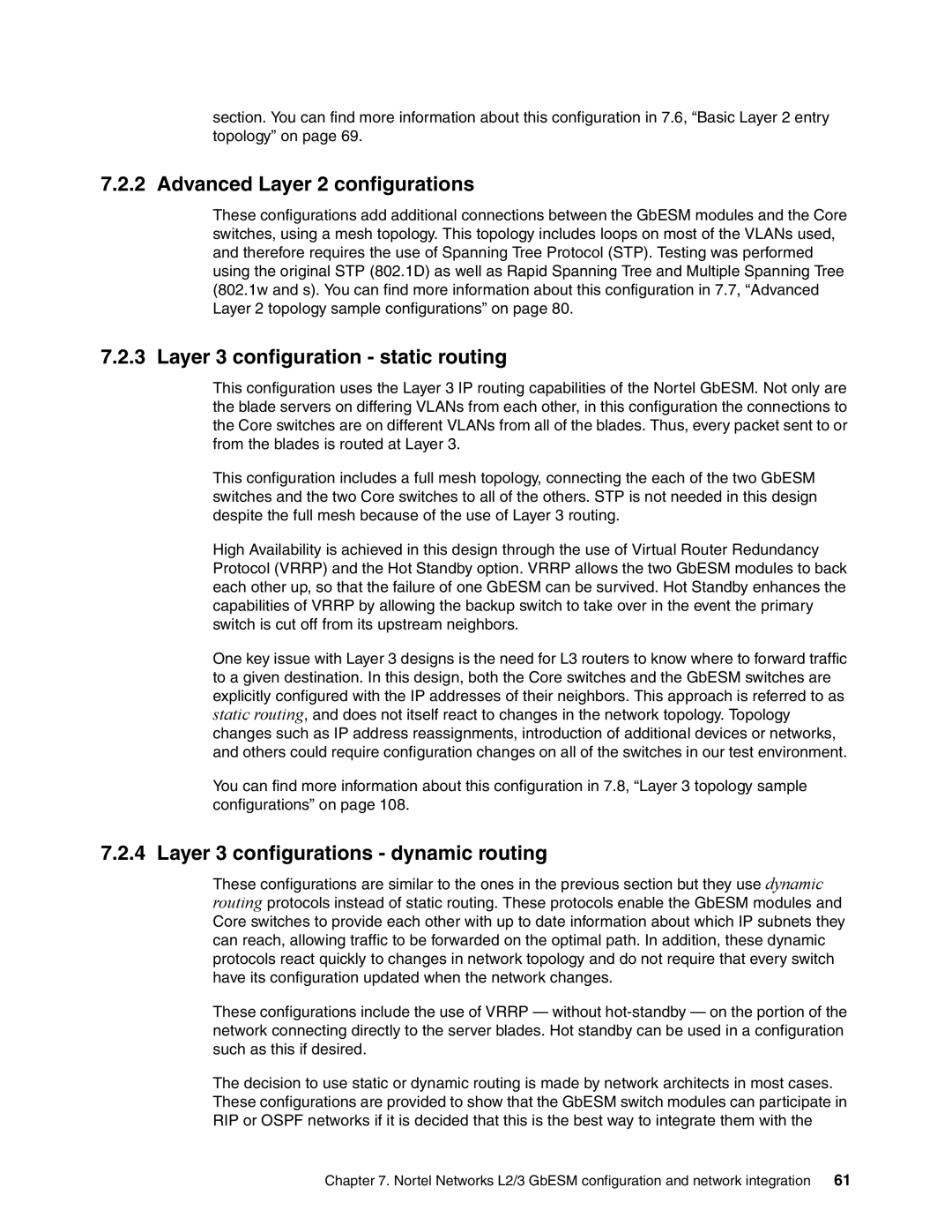section. You can find more information about this configuration in 7.6, “Basic Layer 2 entry topology” on page 69.
7.2.2 Advanced Layer 2 configurations
These configurations add additional connections between the GbESM modules and the Core switches, using a mesh topology. This topology includes loops on most of the VLANs used, and therefore requires the use of Spanning Tree Protocol (STP). Testing was performed using the original STP (802.1D) as well as Rapid Spanning Tree and Multiple Spanning Tree (802.1w and s). You can find more information about this configuration in 7.7, “Advanced Layer 2 topology sample configurations” on page 80.
7.2.3 Layer 3 configuration - static routing
This configuration uses the Layer 3 IP routing capabilities of the Nortel GbESM. Not only are the blade servers on differing VLANs from each other, in this configuration the connections to the Core switches are on different VLANs from all of the blades. Thus, every packet sent to or from the blades is routed at Layer 3.
This configuration includes a full mesh topology, connecting the each of the two GbESM switches and the two Core switches to all of the others. STP is not needed in this design despite the full mesh because of the use of Layer 3 routing.
High Availability is achieved in this design through the use of Virtual Router Redundancy Protocol (VRRP) and the Hot Standby option. VRRP allows the two GbESM modules to back each other up, so that the failure of one GbESM can be survived. Hot Standby enhances the capabilities of VRRP by allowing the backup switch to take over in the event the primary switch is cut off from its upstream neighbors.
One key issue with Layer 3 designs is the need for L3 routers to know where to forward traffic to a given destination. In this design, both the Core switches and the GbESM switches are
explicitly configured with the IP addresses of their neighbors. This approach is referred to as static routing, and does not itself react to changes in the network topology. Topology
changes such as IP address reassignments, introduction of additional devices or networks, and others could require configuration changes on all of the switches in our test environment.
You can find more information about this configuration in 7.8, “Layer 3 topology sample configurations” on page 108.
7.2.4 Layer 3 configurations - dynamic routing
These configurations are similar to the ones in the previous section but they use dynamic routing protocols instead of static routing. These protocols enable the GbESM modules and
Core switches to provide each other with up to date information about which IP subnets they can reach, allowing traffic to be forwarded on the optimal path. In addition, these dynamic protocols react quickly to changes in network topology and do not require that every switch have its configuration updated when the network changes.
These configurations include the use of VRRP — without
The decision to use static or dynamic routing is made by network architects in most cases. These configurations are provided to show that the GbESM switch modules can participate in RIP or OSPF networks if it is decided that this is the best way to integrate them with the
Chapter 7. Nortel Networks L2/3 GbESM configuration and network integration 61
